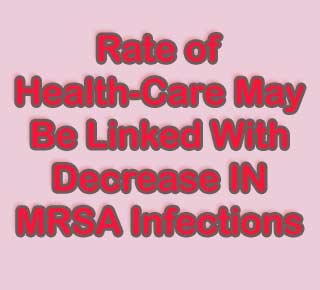
While conducting the research, investigators scrutinized analysis of data from 2005 through 2008 of nine metropolitan areas in the U.S. A population-based surveillance system was adopted for analyzing this data. Information regarding incidence of invasive health care-associated MRSA infections in about 15 million people was included in the investigation.
Alexander J. Kallen, M.D., M.P.H., of the Centers for Disease Control and Prevention, Atlanta, and colleagues evaluated all reports of laboratory-identified episodes of invasive, from a normally sterile body site, like the bloodstream MRSA infections. They then categorized the research material on the basis of setting positive culture and the presence or absence of health care exposures. Experts noted that in health care-associated infections, hospital-onset and health care-associated community-onset supposedly formed 82 percent of the total infections.
Investigators quote, “The modeled incidence, adjusted for age and race, of hospital-onset invasive MRSA infections significantly decreased 9.4 percent per year from 2005 through 2008; while there was a significant 5.7 percent decrease per year in the modeled incidence of health care-associated community-onset infections. This would equate to about a 28 percent decrease in all hospital-onset invasive MRSA infections and about a 17 percent decrease in all invasive health care-associated community-onset infections over the 4-year period.”
In total, participating surveillance sites registered 21,503 cases of invasive MRSA infections for the years 2005 through 2008. Around 17,508 cases either claimed to be hospital-onset or health care-associated community-onset. Investigators elucidate that approximately 15,458 health care-associated infections representing 88 percent were included in a positive blood culture. These infections were seemingly classified as a bloodstream infection (BSI).
Experts mention, “This evaluation demonstrates that the incidence of hospital-onset and health care-associated community-onset invasive MRSA infections has decreased dramatically and significantly in this large geographically diverse population. Taken together with data from more than 600 intensive care units nationwide, these findings suggest that there is a real decrease in MRSA infection rates among patients in U.S. hospitals. As highlighted in the recently finalized U.S. Department of Health and Human Services Action Plan to Prevent Healthcare-Associated Infections, prevention of invasive MRSA infections is a national priority. Although these data suggest progress has occurred in preventing health care-associated MRSA infections, more challenges remain. Increasing adherence to existing recommendations and addressing MRSA transmission and prevention beyond inpatient settings are challenges that will require further effort and investigation if eliminating the goal of preventable health care-associated invasive MRSA infections is to be attained.”
In a subset analysis that was confined to BSIs, the data supposedly displayed a greater reduction in the modeled yearly incidence rates of both hospital-onset showing -11.2 percent and health care-associated community-onset forming -6.6 percent BSIs. This decrease may be equal to a 34 percent reduction in all hospital-onset MRSA BSIs. Also a 20 percent decline in all health care-associated community-onset BSIs over the 4-year period was monitored.
Apparently the precise reason for decrease in incidence of invasive health care-associated MRSA infections is not figure out. It is presumed that various factors like the dissemination of MRSA prevention practices in many U.S. hospitals actively contribute to the decline.
The research is published in the August 11 issue of JAMA.
